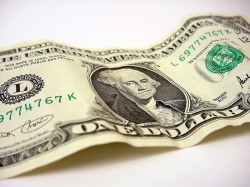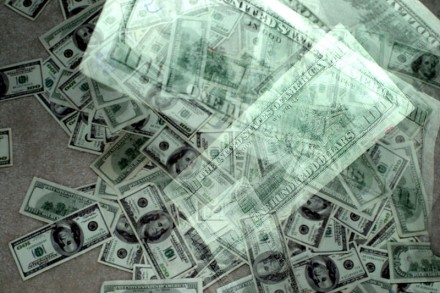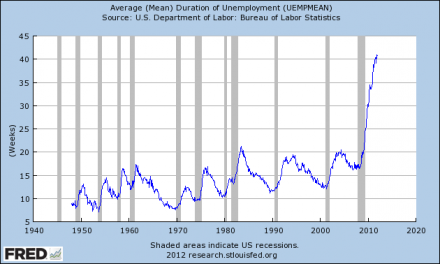 Is the petrodollar dead? Well, not yet, but the nails are being hammered into the coffin even as you read this. For decades, most of the nations of the world have used the U.S. dollar to buy oil and to trade with each other. In essence, the U.S. dollar has been acting as a true global currency. Virtually every country on the face of the earth has needed big piles of U.S. dollars for international trade. This has ensured a huge demand for U.S. dollars and U.S. government debt. This demand for dollars has kept prices and interest rates low, and it has given the U.S. government an incredible amount of power and leverage around the globe. Right now, U.S. dollars make up more than 60 percent of all foreign currency reserves in the world. But times are changing. Over the past couple of years there has been a whole bunch of international agreements that have made the U.S. dollar less important in international trade. The mainstream media in the United States has been strangely quiet about all of these agreements, but the truth is that they are setting the stage for a fundamental shift in the way that trade is conducted around the globe. When the petrodollar dies, it is going to have an absolutely devastating impact on the U.S. economy. Sadly, most Americans are totally clueless regarding what is about to happen to the dollar.
Is the petrodollar dead? Well, not yet, but the nails are being hammered into the coffin even as you read this. For decades, most of the nations of the world have used the U.S. dollar to buy oil and to trade with each other. In essence, the U.S. dollar has been acting as a true global currency. Virtually every country on the face of the earth has needed big piles of U.S. dollars for international trade. This has ensured a huge demand for U.S. dollars and U.S. government debt. This demand for dollars has kept prices and interest rates low, and it has given the U.S. government an incredible amount of power and leverage around the globe. Right now, U.S. dollars make up more than 60 percent of all foreign currency reserves in the world. But times are changing. Over the past couple of years there has been a whole bunch of international agreements that have made the U.S. dollar less important in international trade. The mainstream media in the United States has been strangely quiet about all of these agreements, but the truth is that they are setting the stage for a fundamental shift in the way that trade is conducted around the globe. When the petrodollar dies, it is going to have an absolutely devastating impact on the U.S. economy. Sadly, most Americans are totally clueless regarding what is about to happen to the dollar.
One of the reasons the Federal Reserve has been able to get away with flooding the financial system with U.S. dollars is because the rest of the world has been soaking a lot of those dollars up. The rest of the world has needed giant piles of dollars to trade with, but what is going to happen when they don’t need dollars anymore?
Could we see a tsunami of inflation as demand for the dollar plummets like a rock?
The power of the U.S. dollar has been one of the few things holding up our economy. Once that leg gets kicked out from under us we are going to be in a whole lot of trouble.
The following are 11 international agreements that are nails in the coffin of the petrodollar….
#1 China And Russia
China and Russia have decided to start using their own currencies when trading with each other. The following is from a China Daily article about this important agreement….
China and Russia have decided to renounce the US dollar and resort to using their own currencies for bilateral trade, Premier Wen Jiabao and his Russian counterpart Vladimir Putin announced late on Tuesday.
Chinese experts said the move reflected closer relations between Beijing and Moscow and is not aimed at challenging the dollar, but to protect their domestic economies.
“About trade settlement, we have decided to use our own currencies,” Putin said at a joint news conference with Wen in St. Petersburg.
The two countries were accustomed to using other currencies, especially the dollar, for bilateral trade. Since the financial crisis, however, high-ranking officials on both sides began to explore other possibilities.
#2 China And Brazil
Did you know that Brazil conducts more trade with China than with anyone else?
The largest economy in South America has just agreed to a huge currency swap deal with the largest economy in Asia. The following is from a recent BBC article….
China and Brazil have agreed a currency swap deal in a bid to safeguard against any global financial crisis and strengthen their trade ties.
It will allow their respective central banks to exchange local currencies worth up to 60bn reais or 190bn yuan ($30bn; £19bn).
The amount can be used to shore up reserves in times of crisis or put towards boosting bilateral trade.
#3 China And Australia
Did you know that Australia conducts more trade with China than with anyone else?
Australia also recently agreed to a huge currency swap deal with China. The following is from a recent Financial Express article….
The central banks of China and Australia signed a A$30 billion ($31.2 billion) currency-swap agreement to ensure the availability of capital between the trading partners, the Reserve Bank of Australia said.
“The main purposes of the swap agreement are to support trade and investment between Australia and China, particularly in local-currency terms, and to strengthen bilateral financial cooperation,” the RBA said in a statement on its website. “The agreement reflects the increasing opportunities available to settle trade between the two countries in Chinese renminbi and to make RMB-denominated investments.”
China has been expanding currency-swap accords as it promotes the international use of the yuan, and the accord with Australia follows similar deals with nations including South Korea, Turkey and Kazakhstan. China is Australia’s biggest trading partner and accounts for about a quarter of the nation’s merchandise sales abroad.
#4 China And Japan
The second and third largest economies on the entire planet have decided that they should start moving toward using their own currencies when trading with each other. This agreement was incredibly important but it was almost totally ignored by the U.S. media.
According to Bloomberg, it is anticipated that this agreement will strengthen ties between these two Asian giants….
Japan and China will promote direct trading of the yen and yuan without using dollars and will encourage the development of a market for companies involved in the exchanges, the Japanese government said.
Japan will also apply to buy Chinese bonds next year, allowing the investment of renminbi that leaves China during the transactions, the Japanese government said in a statement after a meeting between Prime Minister Yoshihiko Noda and Chinese Premier Wen Jiabao in Beijing yesterday. Encouraging direct yen- yuan settlement should reduce currency risks and trading costs, the Japanese and Chinese governments said.
China is Japan’s biggest trading partner with 26.5 trillion yen ($340 billion) in two-way transactions last year, from 9.2 trillion yen a decade earlier.
#5 India And Japan
It is not just China making these kinds of currency agreements. According to Reuters, India and Japan have also agreed to a very large currency swap deal….
India and Japan have agreed to a $15 billion currency swap line, Japan’s Prime Minister Yoshihiko Noda said on Wednesday, in a positive move for the troubled Indian rupee, Asia’s worst-performing currency this year.
#6 “Junk For Oil”: How India And China Are Buying Oil From Iran
Iran is still selling lots of oil. They just aren’t exchanging that oil for U.S. dollars as much these days.
So how is Iran selling their oil without using dollars?
A Bloomberg article recently detailed what countries such as China and India are exchanging for Iranian oil….
Iran and its leading oil buyers, China and India, are finding ways to skirt U.S. and European Union financial sanctions on the Islamic republic by agreeing to trade oil for local currencies and goods including wheat, soybean meal and consumer products.
India, the second-biggest importer of Iran’s oil, has set up a rupee account at a state-owned bank to settle as much as much as 45 percent of its bill, according to Indian officials. China, Iran’s largest oil customer, already settles some of its oil debts through barter, Mahmoud Bahmani, Iran’s central bank governor, said Feb. 28. Iran also has sought to trade oil for wheat from Pakistan and Russia, according to media reports from the two countries.
#7 Iran And Russia
According to Bloomberg, Iran and Russia have decided to discard the U.S. dollar and use their own currencies when trading with each other….
Iran and Russia replaced the U.S. dollar with their national currencies in bilateral trade, Iran’s state-run Fars news agency reported, citing Seyed Reza Sajjadi, the Iranian ambassador in Moscow.
The proposal to switch to the ruble and the rial was raised by Russian President Dmitry Medvedev at a meeting with his Iranian counterpart, Mahmoud Ahmadinejad, in Astana, Kazakhstan, of the Shanghai Cooperation Organization, the ambassador said.
#8 China And Chile
China and Chile recently signed a new agreement that will dramatically expand trade between the two nations and that is also likely to lead to significant currency swaps between the two countries….
The following is from a recent report that described this new agreement between China and Chile….
Wen called on the two nations to expand trade in goods, promote trade in services and mutual investment, and double bilateral trade in three years.
The Chinese leader also said the two countries should enhance cooperation in mining, expand farm product trade, and promote cooperation in farm product production and processing and agricultural technology.
China would like to be actively engaged in Chile’s infrastructure construction and work with Chile to promote the development of transportation networks in Latin America, said Wen.
Meanwhile, Wen suggested that the two sides launch currency swaps and expand settlement in China’s renminbi.
#9 China And The United Arab Emirates
According to CNN, China and the United Arab Emirates recently agreed to a very large currency swap deal….
In January, Chinese Premier Wen Jiabao visited the United Arab Emirates and signed a $5.5 billion currency swap deal to boost trade and investments between the two countries.
#10 China And Africa
Did you know that China is now Africa’s biggest trading partner?
For many years the U.S. dollar was dominant in Africa, but now that is changing. A report from Africa’s largest bank, Standard Bank, says the following….
“We expect at least $100 billion (about R768 billion) in Sino-African trade – more than the total bilateral trade between China and Africa in 2010 – to be settled in the renminbi by 2015.”
#11 Brazil, Russia, India, China And South Africa
The BRICS (Brazil, Russia, India, China and South Africa) continue to become a larger factor in the global economy.
A recent agreement between those nations sets the stage for them to increasingly use their own national currencies when trading with each other rather than the U.S. dollar. The following is from a news source in India….
The five major emerging economies of BRICS — Brazil, Russia, India, China and South Africa — are set to inject greater economic momentum into their grouping by signing two pacts for promoting intra-BRICS trade at the fourth summit of their leaders here Thursday.
The two agreements that will enable credit facility in local currency for businesses of BRICS countries will be signed in the presence of the leaders of the five countries, Sudhir Vyas, secretary (economic relations) in the external affairs ministry, told reporters here.
The pacts are expected to scale up intra-BRICS trade which has been growing at the rate of 28 percent over the last few years, but at $230 billion, remains much below the potential of the five economic powerhouses.
So what does all of this mean?
It means that the days of the U.S. dollar being the de facto reserve currency of the world are numbered.
So why is this important?
In a previous article, I quoted an outstanding article by Marin Katusa that detailed many of the important benefits that the petrodollar system has had for the U.S. economy….
The “petrodollar” system was a brilliant political and economic move. It forced the world’s oil money to flow through the US Federal Reserve, creating ever-growing international demand for both US dollars and US debt, while essentially letting the US pretty much own the world’s oil for free, since oil’s value is denominated in a currency that America controls and prints. The petrodollar system spread beyond oil: the majority of international trade is done in US dollars. That means that from Russia to China, Brazil to South Korea, every country aims to maximize the US-dollar surplus garnered from its export trade to buy oil.
The US has reaped many rewards. As oil usage increased in the 1980s, demand for the US dollar rose with it, lifting the US economy to new heights. But even without economic success at home the US dollar would have soared, because the petrodollar system created consistent international demand for US dollars, which in turn gained in value. A strong US dollar allowed Americans to buy imported goods at a massive discount – the petrodollar system essentially creating a subsidy for US consumers at the expense of the rest of the world. Here, finally, the US hit on a downside: The availability of cheap imports hit the US manufacturing industry hard, and the disappearance of manufacturing jobs remains one of the biggest challenges in resurrecting the US economy today.
So what happens when the petrodollar dies?
The following are some of the things we are likely to see….
-Oil will cost a lot more.
-Everything will cost a lot more.
-There will be a lot less foreign demand for U.S. government debt.
-Interest rates on U.S. government debt will rise.
-Interest rates on just about everything in the U.S. economy will rise.
And that is just for starters.
As I wrote about earlier today, the Federal Reserve is not going to save us. Ben Bernanke is not somehow going to pull a rabbit out of a hat that will magically make everything okay. Fundamental changes to the global financial system are happening right now that are impossible for Bernanke to stop.
We should have never gone into so much debt. Up until now we have gotten away with it, but when demand for U.S. dollars and U.S. debt dries up we are going to experience a massive amount of pain.
Keep your eyes and ears open for more news stories like the ones referenced above. The end of the petrodollar is going to be a very significant landmark on the road toward the total collapse of the U.S. economy.
So what do you think the fate of the U.S. dollar is going to be in the years ahead?
Please feel free to post a comment with your thoughts below….



